Thinking about the perfect destination for your 2024 Easter holidays? Have you ever heard about Semana Santa or Holy Week in Spain, especially in Malaga?
Well, if you want to discover this unique, ancient festival in the Christian calendar, you need to come to Malaga!
Why? So many reasons, that you will discover by reading our Ultimate Guide to Malaga Holy Week in 2024, where I will try to answer aaaall your questions
- What is Holy Week or Semana Santa about?
- When is Holy Week in 2024?
- Where and How is Holy Week celebrated?
- Holy Week in Malaga: How is it and why is it so special?
- Holy or Easter Week in Malaga: Who is who? Main characters and features!
- Malaga Holy Week 2024: Main Events and Eastern Processions day by day
- 2024 Official Route of Holy Week Processions in Malaga
- Malaga Holy Week in 2024: useful tips and practicalities
What is Holy Week or Semana Santa about?
Holy Week is the last week of Lent and it celebrates the Passion of Jesus Christ.
During this period, many processions are held by brotherhoods (cofradías) all along the city; they carry wooden sculptures and extravagant thrones (tronos or pasos) representing the events of the Passion of Christ.
When is Holy Week in 2024?
Since this event depends on the lunar cycle, the official date changes every year.
In 2024, Holy Week or Semana Santa will get started on 24th March and will end on 31st March.
If you are interested in coming to Malaga during this period, or in any other, don’t miss the chance to experience one of our tours; discover the historical center of this beautiful city, its food, its traditions, its culture and, of course, all about Holy Week in Malaga.
For more info click here👇👇👇
Where and How is Holy Week celebrated?
As a religious celebration, it is an important event celebrated in any country with a big Christian Catholic community. From Guatemala, Perú, Italy or Israel to Spain, Easter Week is celebrated in different ways.
As you may have noticed by reading my articles about other festivities, Spain has its own way of celebrating festivals, and Easter or Holy Week is not an exception!
So let’s take a closer look at it, focusing on the Easter celebrations of Malaga, one of the most famous and well-known images of Semana Santa in Spain:
Holy Week in Malaga: How is it and why is it so special?
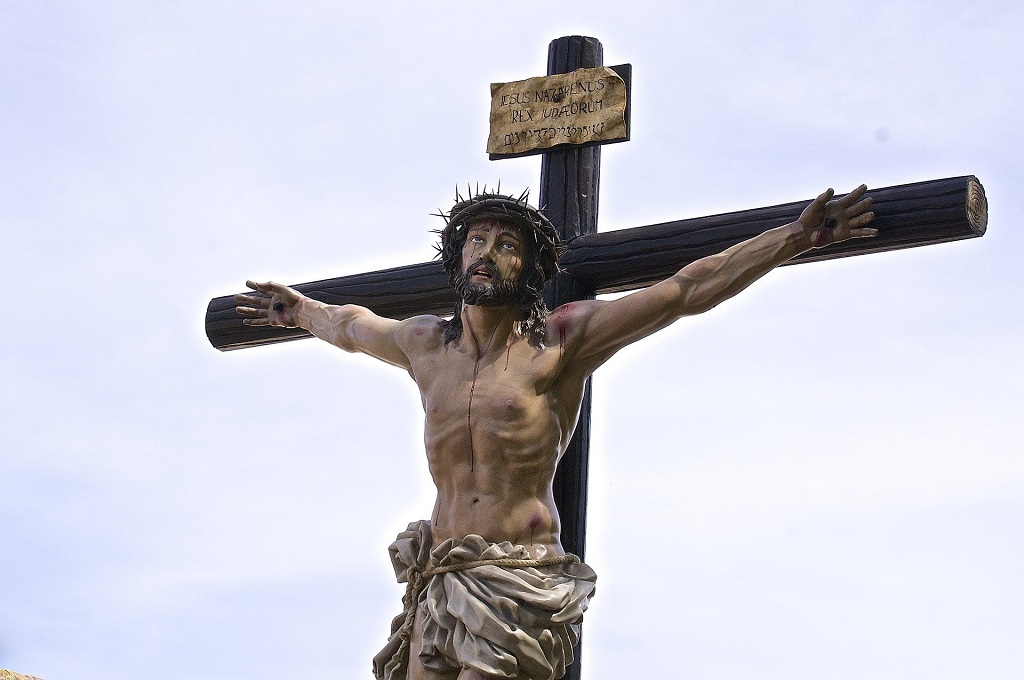
For over 500 years, Holy Week celebrations have been constantly present in the religious and popular feelings of people from Malaga.
Every year, the Holy Week in Málaga takes out to the streets a real festival for all senses: processional thrones carrying images that sway all along the entire route, thousands of penitents lighting and giving color with their candles and robes, processional marches, as well as aromas of incense and flowers filling the air as the processions pass by and thousands of people crowded to see and applaud their favorite tronos.
Images from the Passion on huge ornate “tronos” (floats or thrones) some weighing more than 5.000 kilos and carried by more than 250 members, shape the processions that go through the streets with penitents dressed in long purple robes, often with pointed hats, followed by women in black carrying candles.
Drums and trumpets play solemn music and occasionally someone spontaneously sings a mournful saeta (flamenco verses sung at the processions) dedicated to the floats as they make their way slowly around the streets.
We strongly recommend you to come to Malaga during Holy Week as it’s a unique and unforgettable experience. If you are preparing for your Easter Trip to Spain, we have some discounts and tips you can check out:
DISCOUNTS AND RECOMMENDATIONS FOR YOUR TRIP
✈️ Find the cheapest flights, train or bus tickets here.
🛏️ Get up to 15% discount on your hotel by booking here.
🏛️ Book the best tours and activities here.
🚗 Compare and rent a car at the best price here or hire your transfer here.
📖 Get your Spain travel guide here.
💚 Book your travel insurance here.
Holy or Easter Week in Malaga: Who is who? Main characters and features!
1. Nazareno or “penitent”
A characteristic common with the rest of the Holy Week in Spain is the usage of the nazareno or penitential robe for some of the participants in the processions.
This garment consists of a tunic, a hood with a conical tip (capirote) used to conceal the face of the wearer, and sometimes a cloak. These nazarenos carry processional candles and they go before the thrones.
– Interesting fact: Do Spanish Holy Week penitents have anything to do with the Ku Klux Klan?
NOOT AT ALL! Traditionally, capirotes were used during the times of the Spanish Inquisition: as a punishment, people condemned by the Tribunal were obliged to wear a yellow robe – sacobendito, aka blessed robe – that covered their chest and back. They also had to wear a paper-made cone on their heads with different signs on it, alluding to the type of crime they had committed.
Later, nazarenos started to use them during Spanish Easter processions to symbolize their status as penitents while the Ku Klux Klan’s official uniform was only created in 1915 by William J. Simmons, who re-established the KKK.
According to some sources, Simmons possibly decided to adopt the cone-shaped hat in order to copy the outfit present in D.W. Griffith’s classic film, ‘Birth of a Nation’. Others say that he copied it from the “Hermandad de Los Negritos”, an ancient Holy Week Brotherhood from Sevilla.
2. Emblem
The majority of the brotherhoods carry a significant number of insignia in the procession that is carried by nazarenos:
- Cross guide (the so-called Cruz de Guía – Guiding Cross) is carried at the beginning of each procession and is responsible for guiding it.
- Banner (the so-called Guión) is an emblem of the cofradía in the form of a folded flag, that carries in the center embroidered in thread of gold and silk, the shield of the brotherhood.
- Senatus is the name of an emblem that is used to recall the time of the Roman Empire in which the Passion of Jesus Christ happened. It bears the letters SPQR, which is an acronym for the Latin expression Senatus Populus Que Romanus (Senate and people of Rome).
- Book of Rules (in Spanish Libro de Reglas) is a book that contains the norms and rules of the Brotherhood.
3. Mantilla
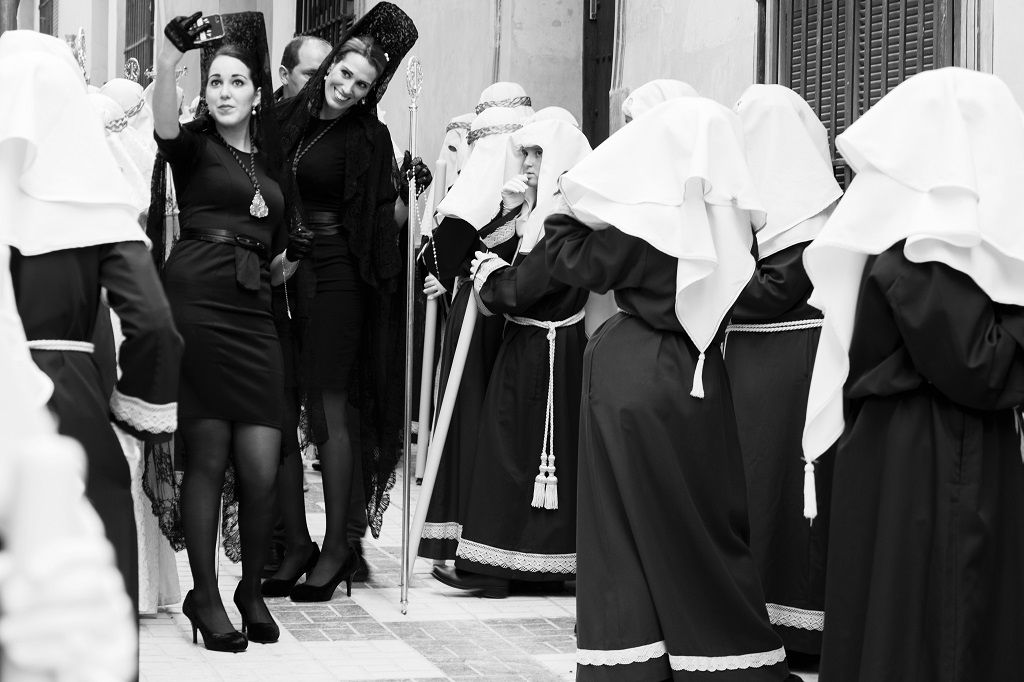
Some processions are accompanied by women wearing a black dress, a sign of mourning and pain, accompanied by a mantilla, lace, or silk veil or shawl worn over the head and back. The peineta, similar in appearance to a large comb, is used to hold up the mantilla
4. Acolyte
Before the throne are placed a group of six or eight acolytes dressed in vestments, many of them wearing dalmatics; the ceroferarios who carry the ciriales or processional candlestick; and the thurifers who carry the thurible where incense is burned and it is dispersed.
5. Throne and Sculpture
The thrones, in other places called pasos, are enormous platforms where are located the sculptures that depict different scenes from the gospels related to the Passion of Christ or the Sorrows of the Virgin Mary.
Each brotherhood usually exhibits two thrones, the first one would be a sculpted scene of the Passion or image of Christ; and the second an image of the Virgin Mary, known as a dolorosa.
The structure of the thrones, known as cajillo, is richly carved in wood, silver, bronze, or nickel silver and some gilt with gold leaf. In each of the corners of the cajillo there is a lantern to illuminate the sculptural group.
The sculptures located at the top of the throne, often life-size or somewhat smaller, are the central axis of each brotherhood.
Malaga Holy Week 2024: Main Events and Eastern Processions day by day
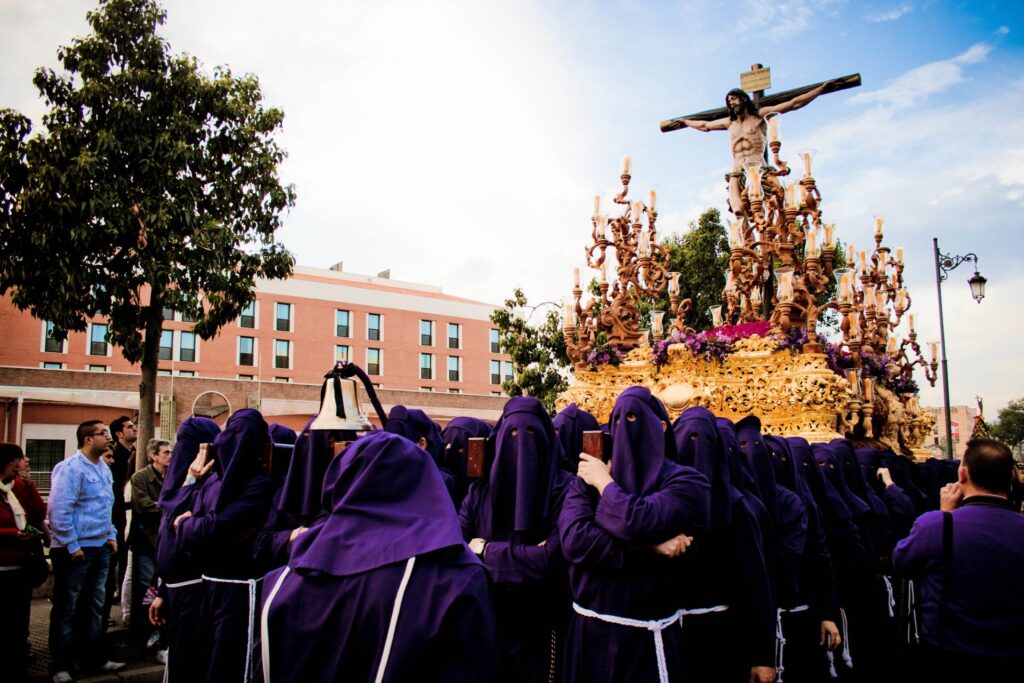
During Holy Week, 42 brotherhoods (cofradías) make 45 processions through the streets of Málaga, showing realistic wooden sculptures narrating scenes of the events of the Passion of Christ, or images of the Virgin Mary showing sorrow.
Since Holy Week is a religious event, you might expect a silent and solemn celebration… well, I can assure you that in Malaga, we are quite far from that.
Starting from the morning to late at night, you will attend a charming representation of people’s devotion: suggestive processions, enchanting music, and traditional dances.
Holy Week in Malaga was declared “Fiesta of International Tourist Interest of Spain in 1965” by the General Secretariat of Tourism of the Ministry of Industry, Tourism and Trade of the Government of Spain 🏆🏆🏆
Processions start on Palm Sunday and continue until Easter Sunday, with the most dramatic and solemn on Maundy Thursday and Good Friday. Let’s have a look at what Holy Week in Malaga has to offer day by day.
Palm Sunday 🌴
The parades get started and the streets get crowded. This is the first day and also the one where more brotherhoods process.
Antonio Banderas, since he is a native of Malaga, is used to joining this procession as a member of the “Real Cofradías Fusionaras” ! 🤩🌟🤩🌟
Holy Monday 💃
The longest procession of the week takes place on this day. Among all the brotherhoods processing you can find:
- “The Captive” (El Cautivo): Probably the most well-known brotherhood in Malaga and with a massive following – Passes by the main ‘Tribuna’ area at 8:05 pm
- “The Promises” (Las Promesas), in penitence behind the thrones, praying for their wishes to become true.
- “The Gypsies” (Los Gitanos), show their devotion by singing and dancing Flamenco.
- “The Students” (Los Estudiantes), this brotherhood is joined by most of the students of the University of Malaga.
Holy Tuesday 🌹
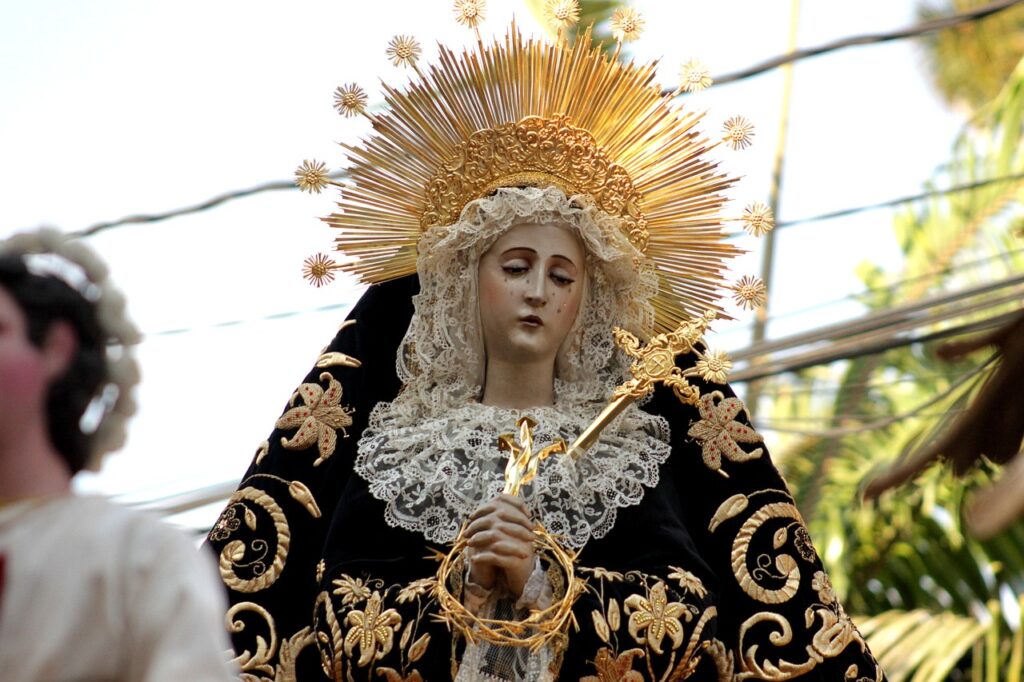
Let your eyes be delighted by the mantle of roses of the “Virgin of The Penas”! It is made by gardeners of the Town Council and it’s one of the most fascinating religious figures of the parade.
Holy Wednesday 🗽
Did you know that in the 18th century, some prisoners escaped from their cells in Malaga to make their own parade during Holy Week? What is amazing about this fact is that they eventually voluntarily returned to prison. This act impressed the king, who decided to set one of them free!
Nowadays this tradition still persists and you can be there to attend this act of benevolence on this day.
Maundy Thursday 🎖️
On this day, there is a unique procession with some special guests: Legionnaire troops!
The Spanish Legion parades the image of Christ of the Good Death together with the Legion’s own military band and Honor guard on Maundy Thursday, very popular among tourists, locals, and military veterans. They land in the port and then make their way through the city.
Good Friday 🕯️
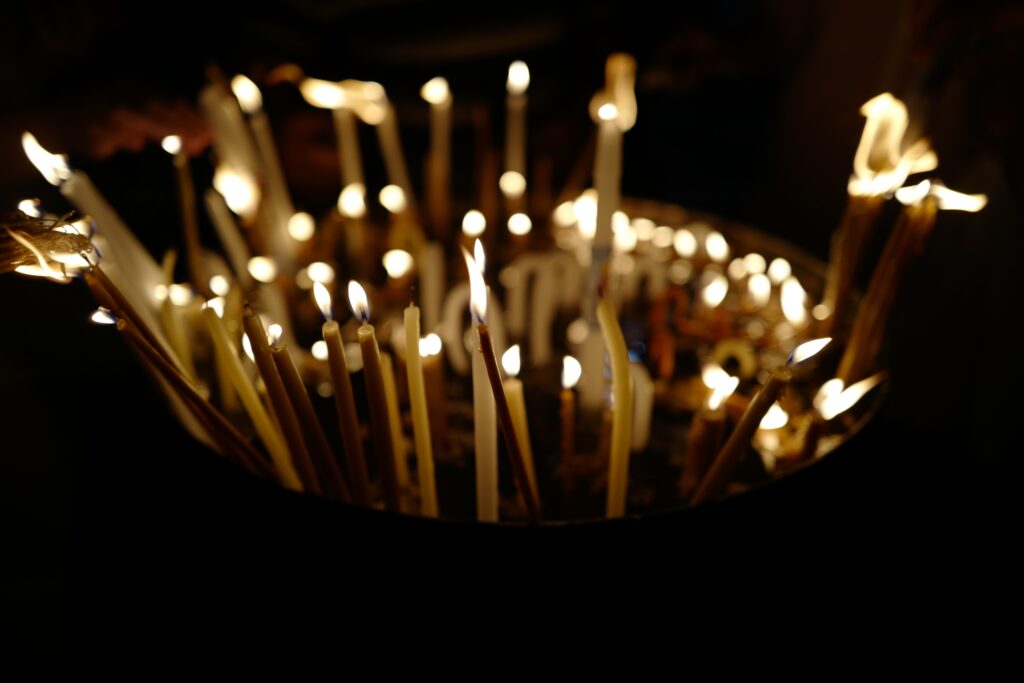
Since these processions remember the path of God to his death, they are usually held by a funeral court. The atmosphere is more solemn and quiet than all the other days.
During the last procession, held by “Servite Order” (Orden de Servitas), the city lights turned off as the thrones go by.
Easter Sunday 🐣
During the last day, the Resurrection processions are held by all the brotherhoods. The gowns, whose colors are black and purple during all pre-Easter periods, now turn white and green.
2024 Official Route of Holy Week Processions in Malaga
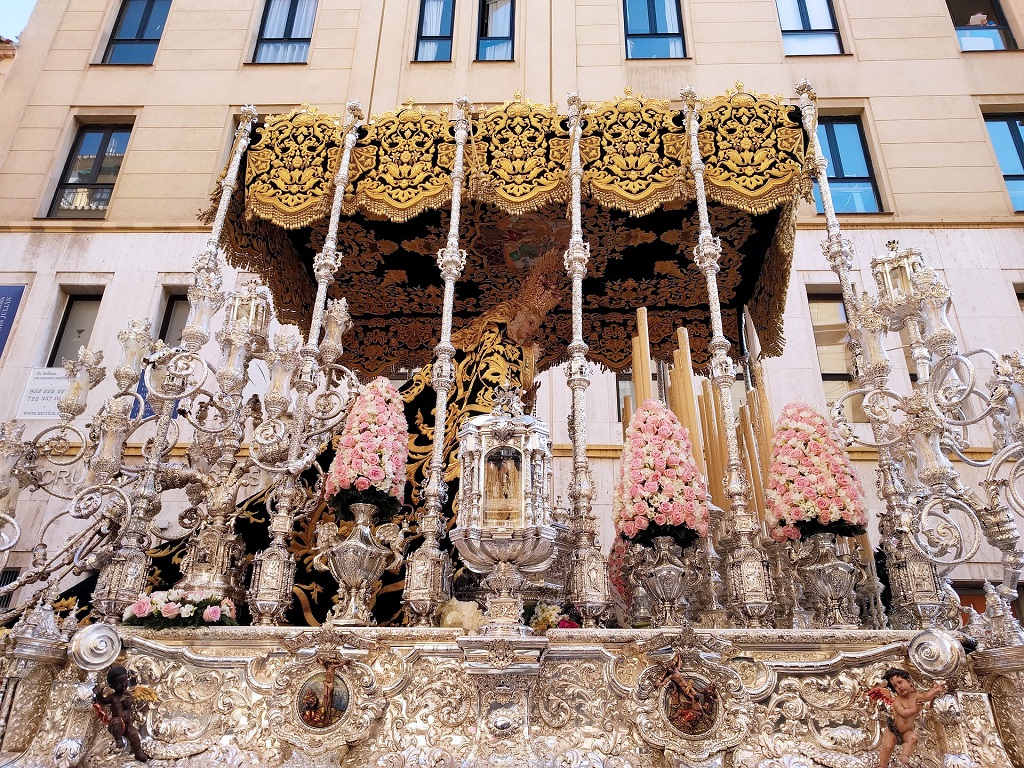
Every day you can attend different processions, almost every hour!
The starting point of each procession is different for every brotherhood, as they leave from the temple or the house where their thrones are held and then they get to the main streets where the official route gets started.
The official route, known as “Tribuna” is about 850 meters and covers the following places:
- Alameda Principal
- Larios roundabout
- Marqués de Larios street
- Constitution Square
- Granada Street
Eventually, all the brotherhoods make their way to their origin temples or, in some cases, they get inside the Cathedral.
Best places to watch Malaga Easter Processions in 2024
You can decide either to follow the processions or to sit and watch them. As to the latter, if you want to have a good view you can reserve a private seat along the Official Route or Tribuna, or even rent a balcony!
A free option is to sit in the “Rostrum of the poor”, a long staircase located at the end of Carreteria Street.
Malaga Holy Week in 2024: useful tips and practicalities
How can I get to and around Malaga at Easter time?
The processions disrupt the traffic and many roads are cut off temporarily while the processions pass. This added to the metro works makes bringing your car to Malaga even more of a nightmare. Use public transport wherever possible.
Easter in Malaga city centre is extremely crowded and making your way around the streets can be difficult. If you want to cross the Alameda Principal or Calle Larios, look for the designated crossings.
What happens if it rains?
If heavy rain is forecast or it starts to rain hard during a procession then the procession is usually called off. Showers of rain will delay a procession, sometimes for a few hours.
To sum up, Holy Week in Malaga is a celebration you should watch and enjoy at least once in your life. Obviously, Malaga has so much to offer in every season! So, come and see yourself! Also, if you want to know much more about Andalusia, don’t forget to check out our blog!

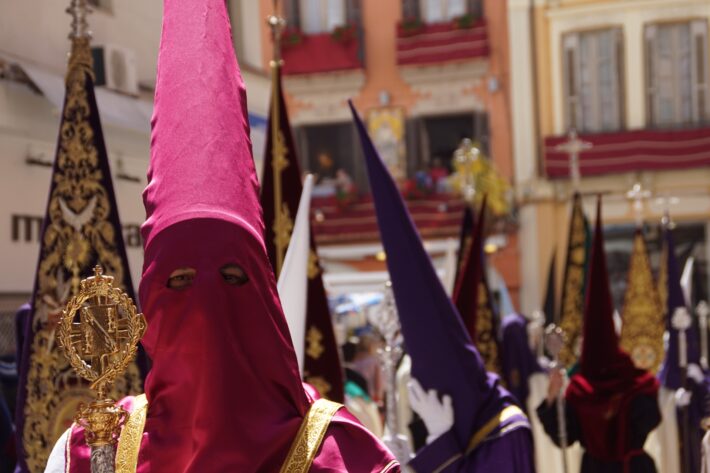
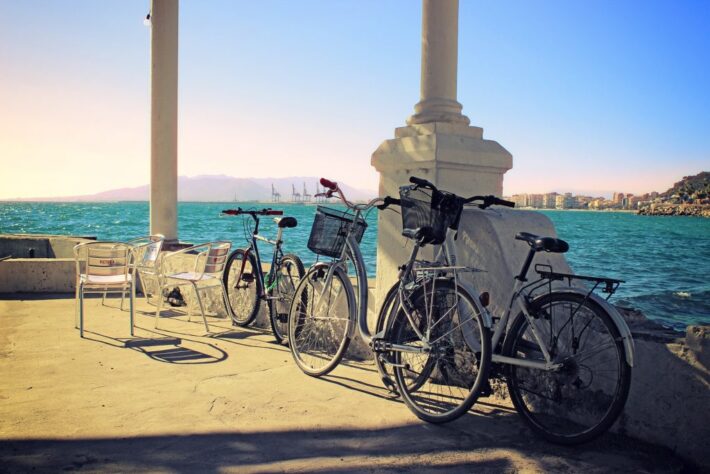
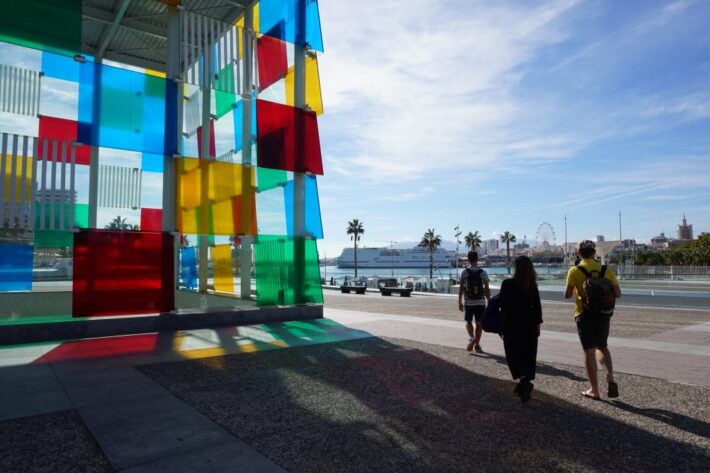
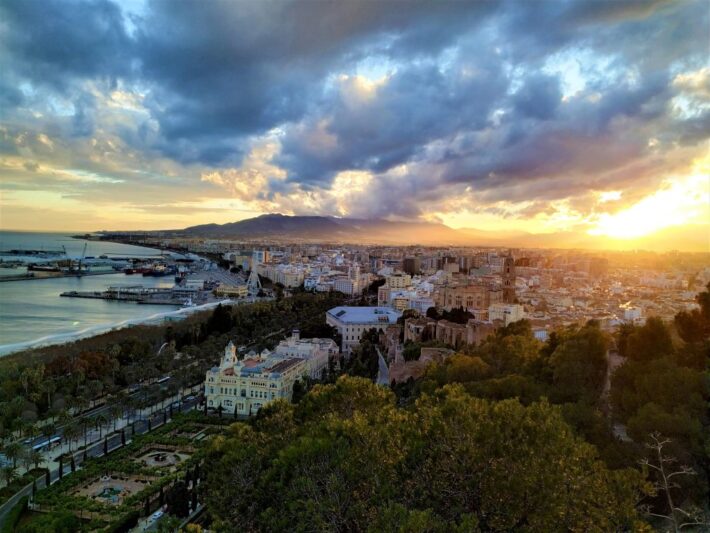
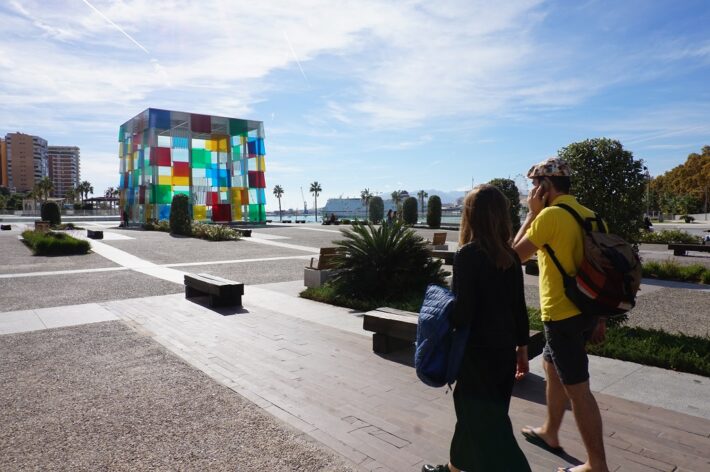

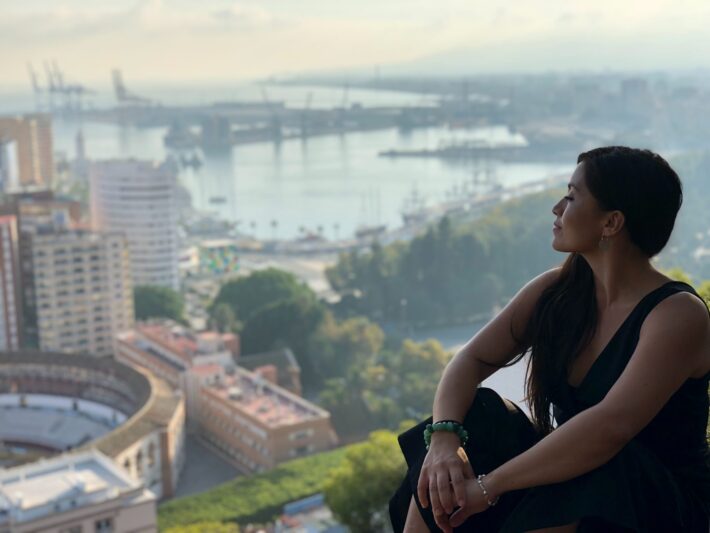

Hi! We will be in the port of Malaga on April 5, 2023.
Please tell me how we can book a tour with a local to see the most possible during Semana Santa.
I have been looking forward to this for years. I do not want a large tour group from our cruise but rather something more authentic.
Thank you very much for your help
Sure! We will be happy to show you around our beloved Malaga! You can have a look at the small group and private tours we offer in Malaga: https://ohmygoodguide.com/malaga/
We have visited Malaga previously and enjoyed it very much. After reading your article, we’ll choose the Holy Week period for our next trip to Malaga city!
We will be in Malaga for the Holy Week this year! Looking forward to seeing all the processions around!